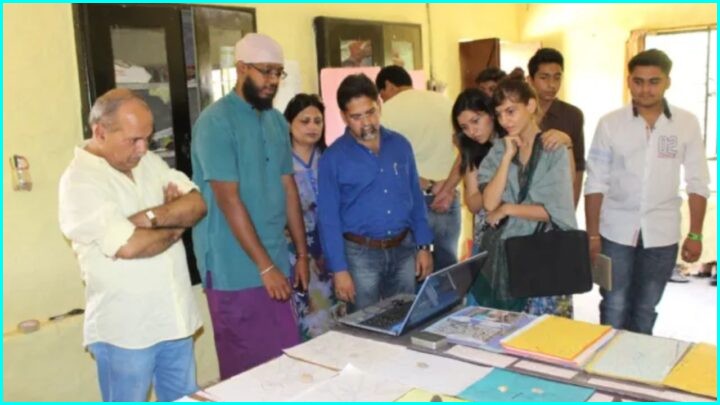Teacher Training Colleges – In recent years, teacher training colleges in Bihar have been transforming the educational landscape through innovative and inclusive learning models. Gone are the days of crowded lecture halls and passive learning methods. With small classroom sizes, an emphasis on diversity, and a focus on mentorship-driven pedagogy, these institutions are building a strong foundation for the future of education in the state. This progressive shift not only benefits aspiring teachers but also holds the potential to significantly uplift the quality of education across Bihar’s schools. Let’s explore how these training colleges are leading this educational revolution and what it means for students, educators, and communities.
The New Wave of Teacher Training in Bihar
Bihar’s education sector has often been criticized for outdated methods and under-resourced institutions. However, a new wave of teacher training colleges is changing that narrative by embracing modern, inclusive, and student-centric teaching models.
Key Characteristics of the New Learning Approach:
- Smaller classroom sizes for personalized attention
- Inclusive admission practices encouraging diversity
- Active mentorship programs to guide student-teachers
- Use of modern teaching aids and methods
- Focus on critical thinking and practical application
These changes are aligned with the goals of the National Education Policy (NEP 2020), which emphasizes experiential learning, teacher empowerment, and inclusive education.
 GNSTTC, Nabinagar Celebrates 20 Years of Inclusive and Individualized Education with Alumni Event
GNSTTC, Nabinagar Celebrates 20 Years of Inclusive and Individualized Education with Alumni Event
Small Classrooms: A Game-Changer for Teacher Preparation
One of the most noticeable shifts is the reduction in classroom sizes. Traditionally, teacher training sessions often included over 60 students in a batch, leaving little room for interaction.
Benefits of Small Classrooms:
- Individual attention to each trainee
- Better interaction between trainers and trainees
- More effective assessments and feedback
- Improved collaborative learning
- Easier to implement inclusive practices
By limiting classroom sizes to 25–30 students, institutions can ensure that each future educator gets the support, attention, and engagement they need.
Embracing Diversity in the Teacher Education System
The diversity factor in Bihar’s teacher training colleges has taken center stage. Students from various socio-economic backgrounds, regions, castes, and linguistic groups are being welcomed, creating a vibrant and inclusive learning environment.
How Diversity is Being Encouraged:
- Scholarships and reservation policies for marginalized groups
- Admissions outreach in rural and tribal regions
- Language support for non-Hindi speakers
- Gender-sensitive training and participation programs
- Cultural exchange activities among trainees
This diversity enriches classroom discussions, breaks social barriers, and promotes a more empathetic approach to teaching—a vital trait for future educators.
Mentorship-Driven Pedagogy: Building Teacher Confidence
Mentorship is now becoming a pillar of teacher training in Bihar. Every trainee is paired with an experienced mentor who provides continuous academic and emotional support.
Features of Mentorship-Driven Pedagogy:
- One-on-one mentoring sessions
- Weekly reflective journals reviewed by mentors
- Classroom observation and feedback during internships
- Career guidance and soft skill development
- Emphasis on mental health and well-being
This pedagogy ensures that future teachers not only gain technical knowledge but also grow in confidence, communication, and classroom management.
Comparison Between Traditional and New Models of Teacher Training
| Feature | Traditional Model | New Inclusive Model |
|---|---|---|
| Classroom Size | 60+ students | 25–30 students |
| Learning Style | Lecture-based | Interactive and experiential |
| Faculty Approach | One-way instruction | Mentorship and collaboration |
| Diversity Representation | Limited | High – Regional, gender, socio-economic |
| Assessment Methods | End-term exams only | Continuous assessment + feedback |
| Internship Structure | Minimal or late stage | Structured, early, and guided |
| Technology Use | Low | Moderate to High |
| Emotional Support | Rare | Regular mentorship + counseling |

Digital Tools and Modern Teaching Techniques
Colleges are now integrating digital tools to enhance teacher training programs. From smart classrooms to online learning platforms, technology is transforming pedagogy.
Tools Being Used:
- Smart boards and projectors for interactive lectures
- Google Classroom & Moodle for course management
- Digital attendance and feedback tools
- Online teaching simulations and micro-teaching videos
These innovations are especially valuable for preparing teachers to handle blended and remote learning environments.
Collaborations and Government Support
Several colleges have partnered with government bodies, NGOs, and international organizations to strengthen their training models.
Key Partnerships:
- SCERT Bihar for curriculum alignment
- UNICEF and Azim Premji Foundation for inclusive education modules
- Teach for India and TISS for capacity building and research
- District Education Offices for internship placements
Such collaborations bring in fresh expertise, funding, and global exposure.
The Impact on Future Schools in Bihar
When these trained teachers enter the school system, they bring with them a fresh mindset. This is likely to influence:
- Student participation and attendance
- Inclusive classroom culture
- Low dropout rates
- Higher learning outcomes
- More joyful and interactive classrooms
Real-Life Example from Darbhanga
An inclusive teacher training college in Darbhanga has successfully trained over 300 students from SC/ST and EBC communities in the last 2 years. With mentorship-driven programs and internships in village schools, many of these trainees are now appointed in government primary schools and are creating meaningful change in classrooms by using songs, group activities, and inclusive teaching aids.
FAQs
Q1. What makes Bihar’s new teacher training model different from the traditional approach?
A1. It focuses on small classrooms, diversity, mentorship, and modern teaching tools unlike the traditional lecture-based models.
Q2. How does mentorship benefit student-teachers?
A2. Mentorship provides one-on-one support, emotional guidance, classroom feedback, and career mentoring for aspiring teachers.
Q3. Why is diversity important in teacher training colleges?
A3. Diversity improves classroom understanding, empathy, and ensures inclusive teaching strategies for different student groups.
Q4. Are these new models aligned with national policies?
A4. Yes, they are closely aligned with NEP 2020, which emphasizes inclusive, learner-centered education and teacher empowerment.
Q5. Will this impact the quality of school education in Bihar?
A5. Absolutely, as better trained and empathetic teachers lead to improved learning outcomes and more inclusive schools.


